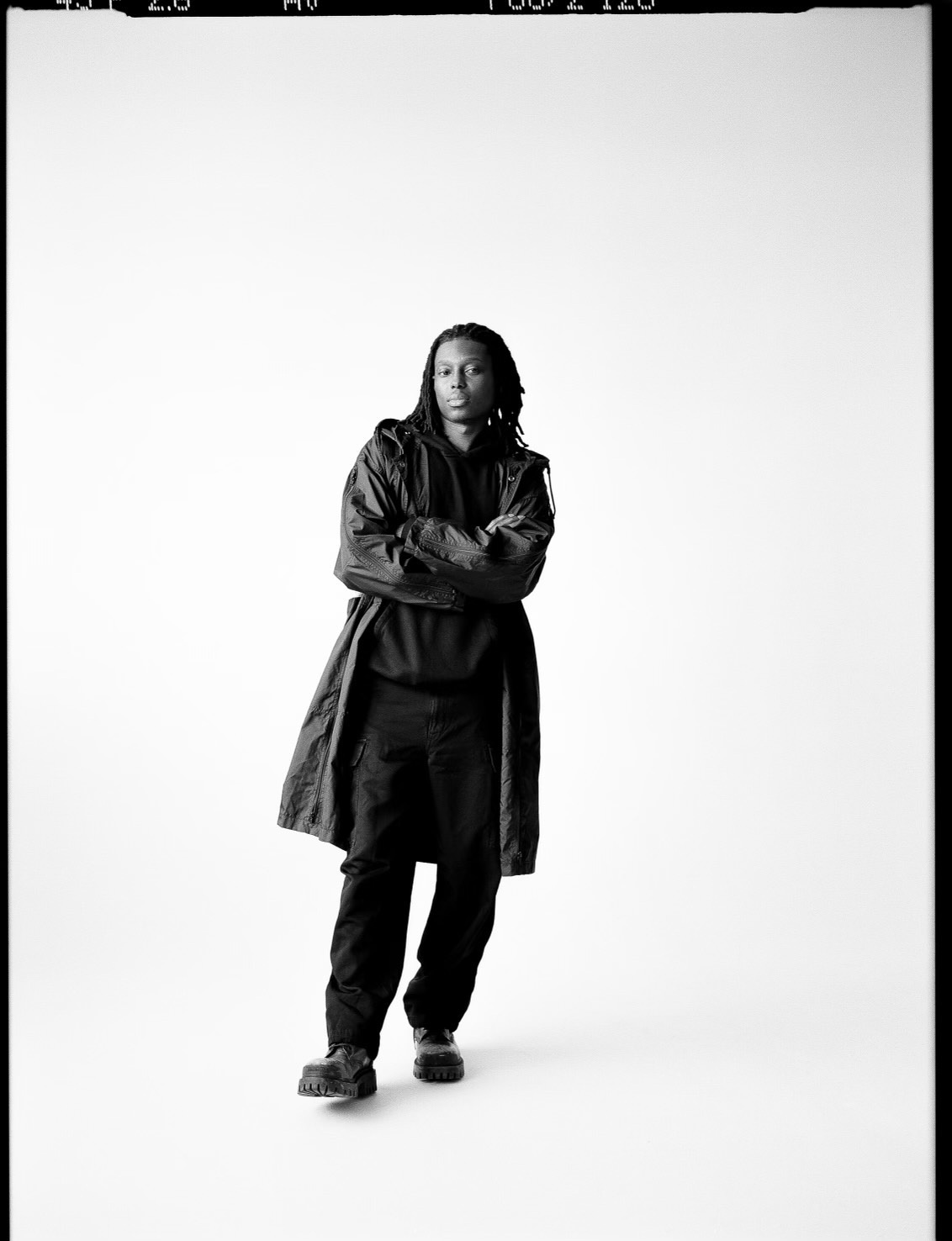
In the opening scene of Stanley Kubrick’s sci-fi epic 2001: A Space Odyssey, a group of apes awakens in a desolate landscape to find an obelisk—dark, silent, and ominous—standing in their midst. The monument, an anachronistic artifact, provides a catalytic link between the past and the future.
Science fiction—and its elaborate yet grim futurist speculations—is a key source of inspiration for Reginald Sylvester ll. The North Carolina-born artist, who grew up on a steady diet of Terminator and Blade Runner films, has turned the question at the heart of the genre on himself, transforming pre-used and industrial materials into works that appear to be dislodged from time.
“I ask myself, ‘1000 years into the future, what would it look like to encounter these works, still standing, in the middle of an obliterated place?’” muses Sylvester as he stands, surrounded by his works, in the middle of Roberts Projects’s Los Angeles space. The artist, who now works out of a studio in Ridgewood, Queens, is in town for “T-1000,” his first solo show with the gallery, which opened on Nov. 16. Large mixed-media paintings line the walls, including two of the artist's more recent rubber-and-aluminum works and two towering sculptures made from scuffed and burnished steel beams that are rooted into the cement floors.
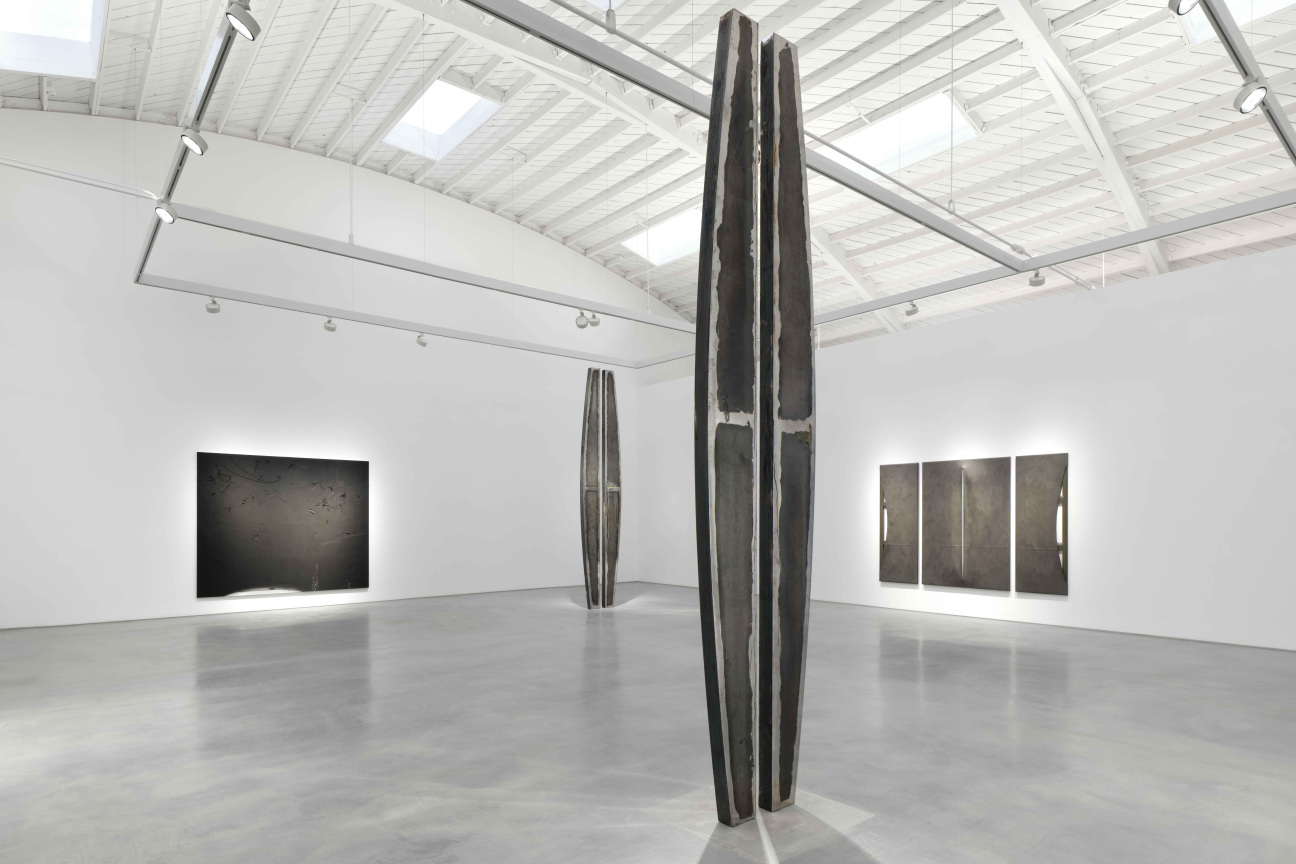
A painter by training, Sylvester has recently shifted his focus to minimalist gestural works, aided by his discovery of rubber—a material that captured his fascination in the last few years. “I was attracted to it naturally, so I brought it to the studio and played around with it until something came forth. After that, I started digging into how rubber was industrialized, and the atrocities of King Leopold III. It made me respect the material in a new way.” By stretching slabs of rubber across aluminum frames and making singular, strategic cuts, Sylvester creates eerie works that evoke various unarticulated pasts. “I want people to visit this show, and then feel the need to come back again,” he says. “I hope it has that kind of resonance.” To mark the opening of “T-1000,” the artist gave CULTURED an exclusive tour of his favorite works on view.
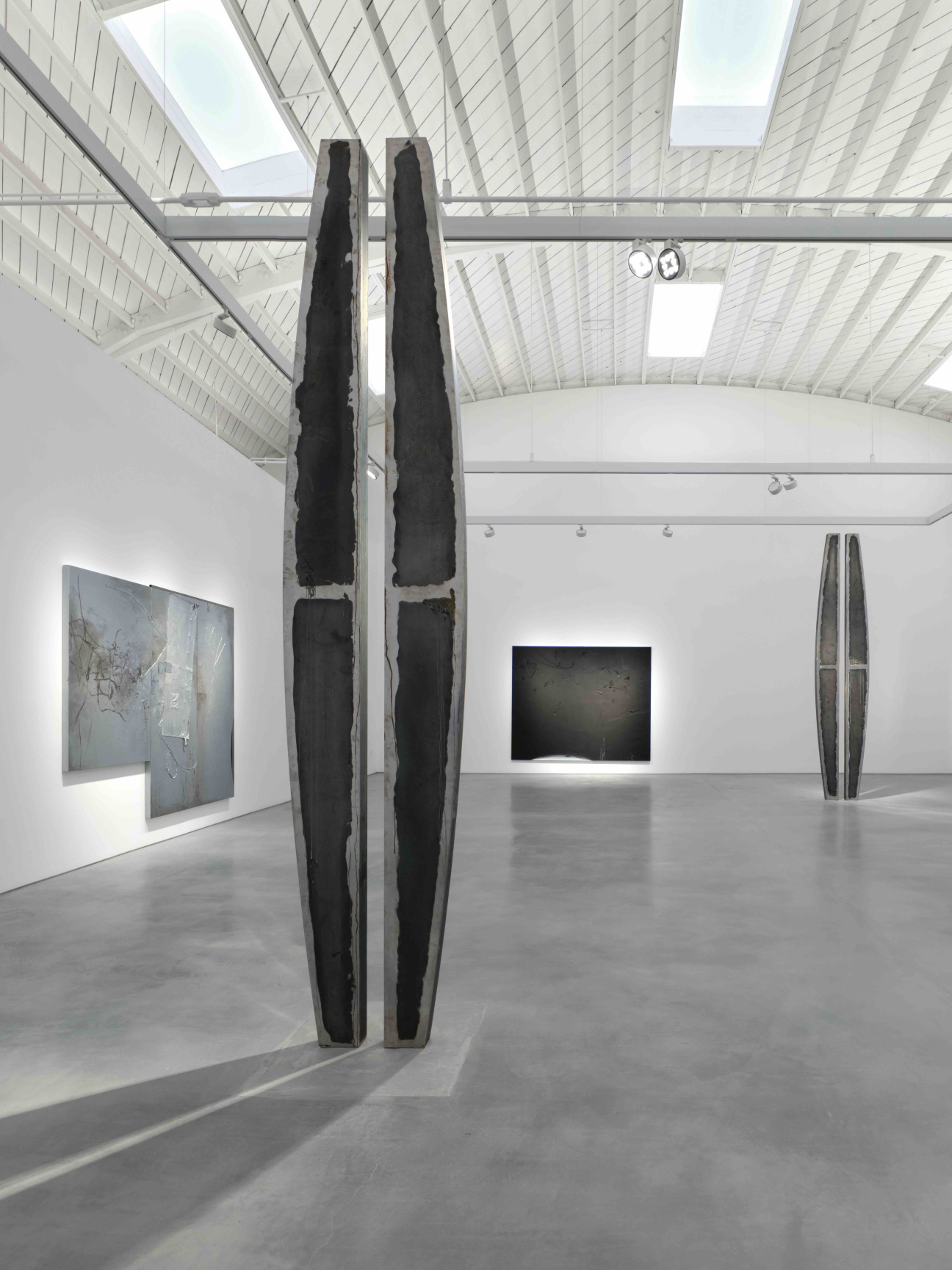
“A lot of my work deals with taking the waste from my studio and putting it back into the work. These are my Gates sculptures. When you lay them next to each other on the floor, they remind me of the floor plans of the ships used in the Trans Atlantic slave trade, and the history that lies within that past. When I thought about elevating them—these forms that caused so much trauma—it gave this form a celestial essence, this feeling of hope. I was thinking about those souls passing into the gates of heaven. You can see the varied textures in the steel, different types of oxidization—it’s about how, to get to heaven, you're going to go through a lot. I really wanted to get to a place of the sublime with this. There’s a grappling—you can get close, but you can't pass through.”
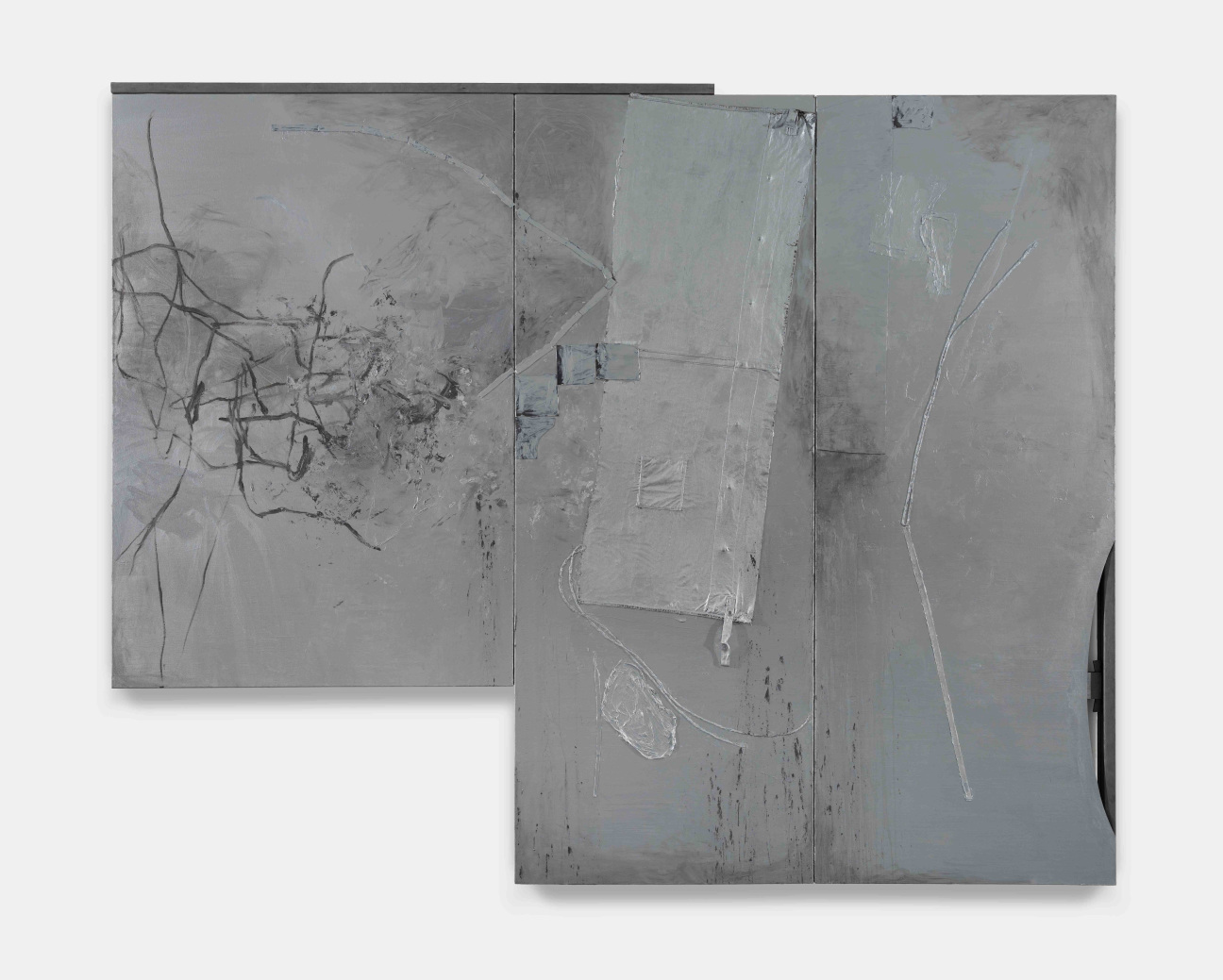
“My love of industrial materials comes first from my interest in futurist themes, and second from the environment I’m in. I work in Ridgewood, New York—this painting is actually titled Ridgewood, 2023—And that area has a lot of hardware shops, car shops, junk yards. I started to look at my environment: the floor of my studio, the sidewalks, the backs of the 18-wheeler trucks. I saw all that grit and grime and wanted to bring that language it into the work. Working with recycled industrial materials is a way for me to find a new language within the canon of abstraction, or of minimalism. Materials really tell you what type of person you are, because you're reacting to the material. I don't want to control it too much. I want to have this almost romantic relationship—you fall in love with somebody for who they are, but change and grow together. I never anticipated that curvature as a result of my incision, but once I made the gesture, I had to respect the rubber’s reaction.”

“This is everybody's favorite—Scission, 2023. Scission is definitely a breakthrough within my practice. The more I evolve as a maker, the more minimal the work becomes. This is the most current representation of that. I stretch this rubber onto the substrate with an aluminum bar behind, and then I make a cut at the center of the rubber where the aluminum bar lies, pushing the rubber back to create form. The show is called “T-1000.” That name is inspired by the Terminator. I listened to the Blade Runner soundtrack a lot while making this work. I was thinking, A thousand years into the future, what would it look like to encounter these works, still standing, in the middle of an obliterated place?"
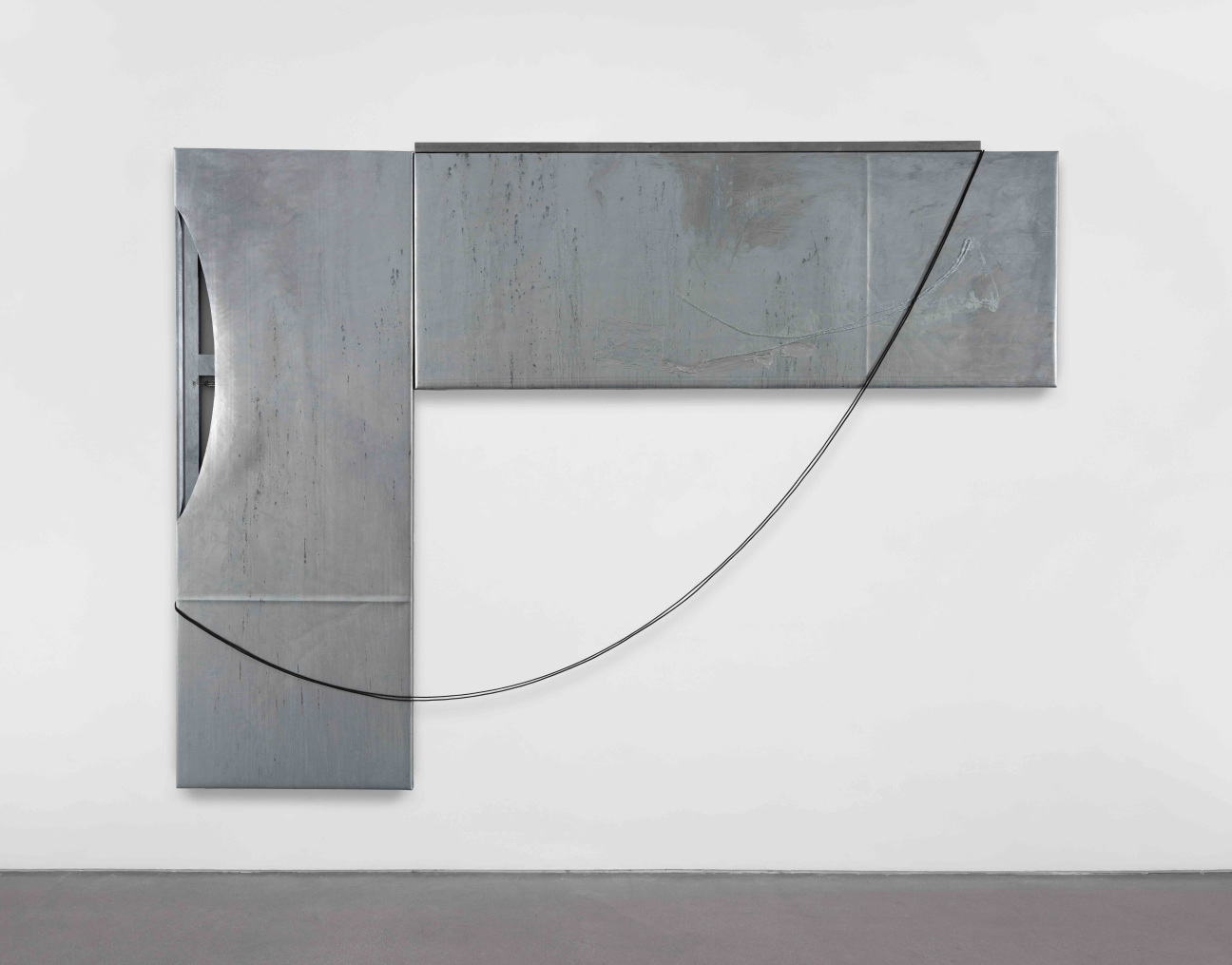
“The first museum I ever went to was the Met, and I saw the work of artists like Clyfford Still and Willem de Kooning. I've always been an admirer of abstract painting, and I'm starting to understand that my interests lie in both materiality and gestural painting. I am interested in industrial materials, and materials with a past history. I want to manipulate them to speak to post-apocalyptic futurist and maybe brutalist themes, while remaining aligned with painters like Stanley Whitney or Brice Marden. So I'm really concerned with trying to grapple with all those interests in this work. And I don't really see it as such a departure. I just see it as a continuous thought process that I'm working my way through in order to investigate the surface of painting."
"T-1000" by Reginald Sylvester II is on view at Roberts Projects in Los Angeles through Dec. 23, 2023.










 in your life?
in your life?

